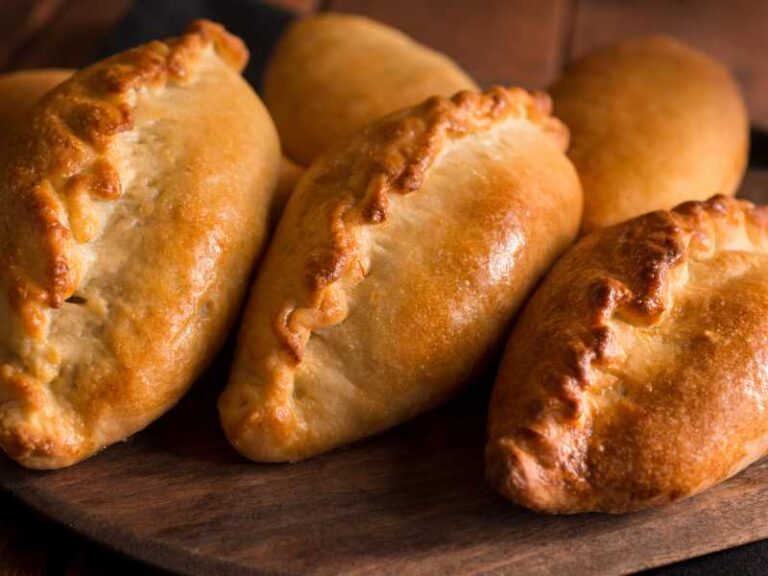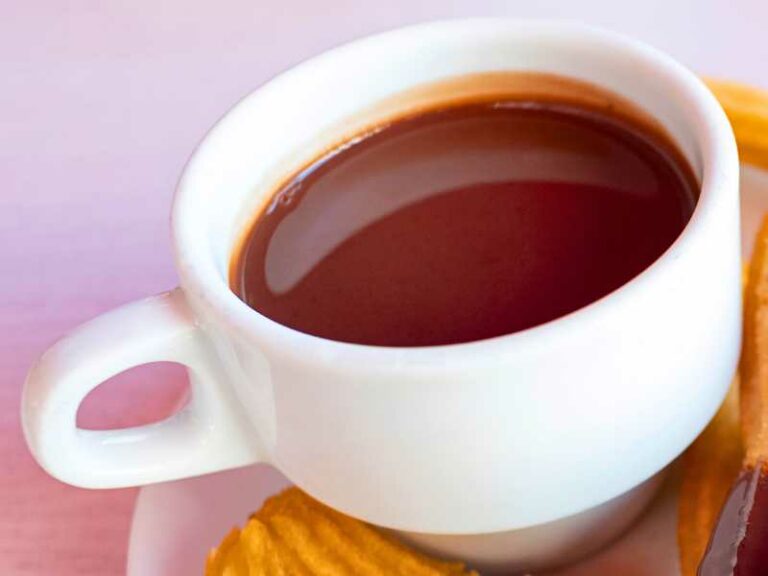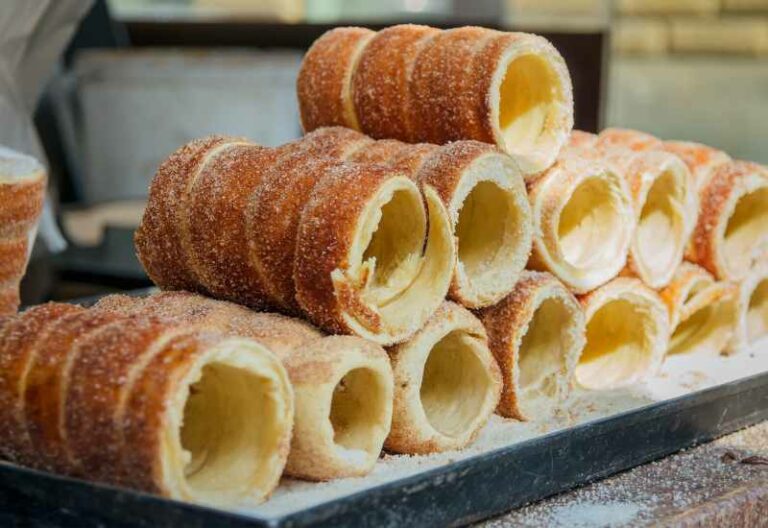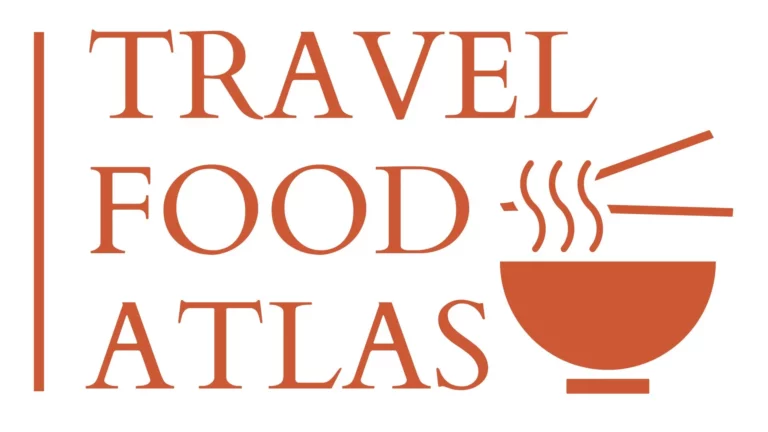Serbian Food: 24 Traditional Dishes of Serbia
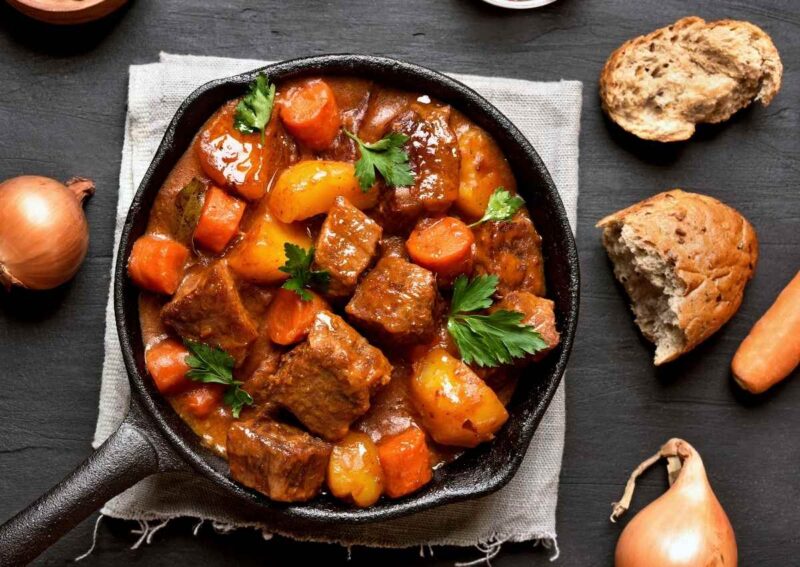
Serbia is a country located in the heart of the Balkans in Southeast Europe, known for its stunning mountains and landscapes. Planina, Kopaonik, Zlatibor and Stara are the notable mountains that bring thousands of hikers and sightseers to Serbia every year.
Serbian cuisine is influenced by Greek, Turkish and Mediterranean food, but has its roots in Eastern European traditions. Staples include hearty stews, soups, meats and vegetables, which feature in many dishes. Much like other Eastern European cuisines, the most commonly used spice in Serbian cuisine is paprika.
Sarma
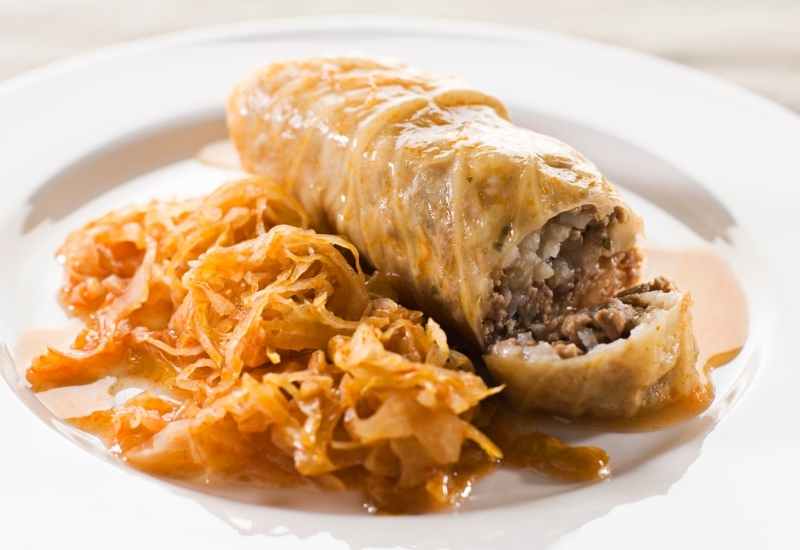
Sarma consists of cabbage leaves stuffed with minced meat, pickled cabbage, tomato sauce, rice and sauerkraut and cooked on a stove or in oven. Considered to be the national dish of Serbia, the word Sarma quite simply means “to wrap in”.
Sarma is also available in variety of other forms where meat can be replaced by fish and smoked bacon.
Ćevapi
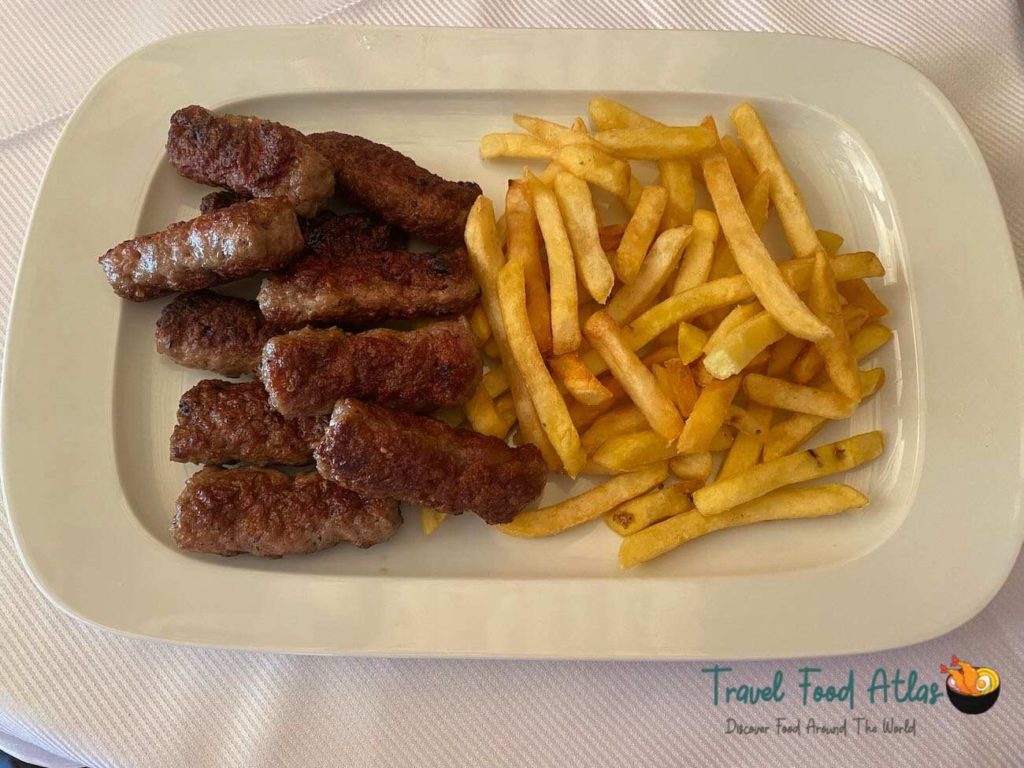
Ćevapi is a type of grilled minced meat derived from the famous Turkish dish, köfte kebab. It is also very popular in neighboring countries of Bosnia and Herzegovina, Croatia, Kosovo, Montenegro, Albania, North Macedonia and Slovenia.
Typically 5-10 pieces of Ćevapi are served on a flatbread or on a plate with the ajvar, sour cream, salt, chopped onions and kajmak. Different meats can be used in different variations of the dish but the traditional Serbian type usually contains lamb, beef or pork, or a combination of these.
Goulash
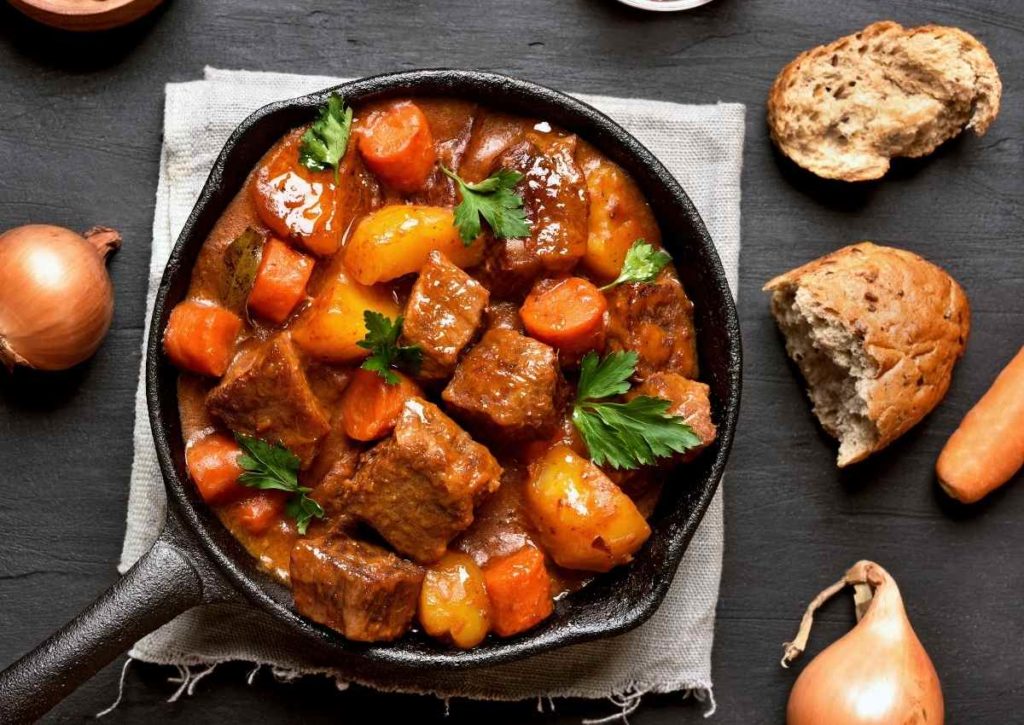
Goulash is a stew made from root vegetables and meat (pork, beef or veal), seasoned spices such as paprika. Other ingredients may include garlic, black pepper, cinnamon, chili pepper, carrots, bell peppers, parsley, red wine, mushrooms, tomatoes and bacon, depending on taste.
Although originating in Hungary in the 9th century, it has now become a staple dish amongst much of Eastern Europe. Its name is derived from a Hungarian word gulya (herd of cattles), as it was originally prepared and consumed by Hungarian shepherds.
Goulash is most often accompanied by mashed potatoes and a chunk of bread.
Karađorđeva šnicla

Karađorđeva šnicla is a Serbian schnitzel made from rolled up pork or veal meat which is stuffed with kajmak, and then coated in breadcrumbs and fried. It is usually served with tartar sauce and baked potatoes or fries.
Karađorđeva šnicla is relatively a modern dish invented by chef Mića Stojanović in 1959. Its name is derived from the famous Serbian revolutionary, Karađorđe, who struggled for the independence of his country from Ottoman Empire.
Rakija

Rakija is the name for fruit spirits produced using a variety of different fruits, most commonly plums, grapes or apricots, although many other types are available.
Rakija is the national drink of Serbia with an alcohol strength of about 40%, it is served in a special type of small glasses (around 30-50 ml). It is usually a colorless liquid but can be colored by adding herbs or other agents. It is stored in wooden containers of mulberry and oak for color and aroma.
Vanilice

Vanilice are a types of cookie made with lard, flour, lemon, sugar, vanilla, eggs and walnuts. As its name indicates the main flavor is vanilla but this is usually complemented with the flavor of a jam, typically apricot or raspberry.
Vanilice are usually made at Christmas time but do tend to make an appearance at other times of the year too.
Uštipci
Uštipci or miške are a type of fried, fluffy doughnut balls eaten alongside a cup of tea or coffee or as a dessert.
Uštipci can be served plain but are often served with jams, nutella, powdered sugar or Eurocrem.
Serbian salad
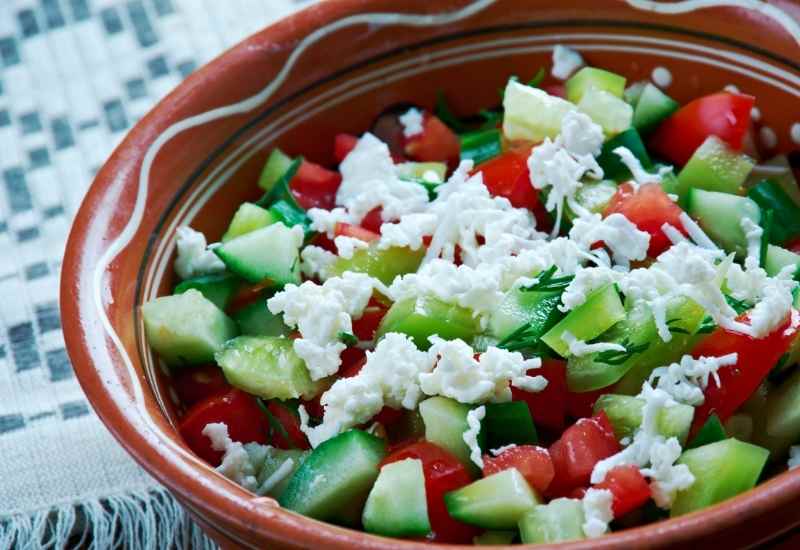
A Serbian salad typically consists of fresh vegetables such as cucumber, onions, cucumber, cheese and tomatoes; seasoned with cayenne pepper, olive oil, salt and pepper. It is commonly served alongside a meat dish or other main courses, and is most popular in the summer.
A Serbian style salad is similar to those eaten in countries such as Greece, Israel and Turkey.
Ajvar
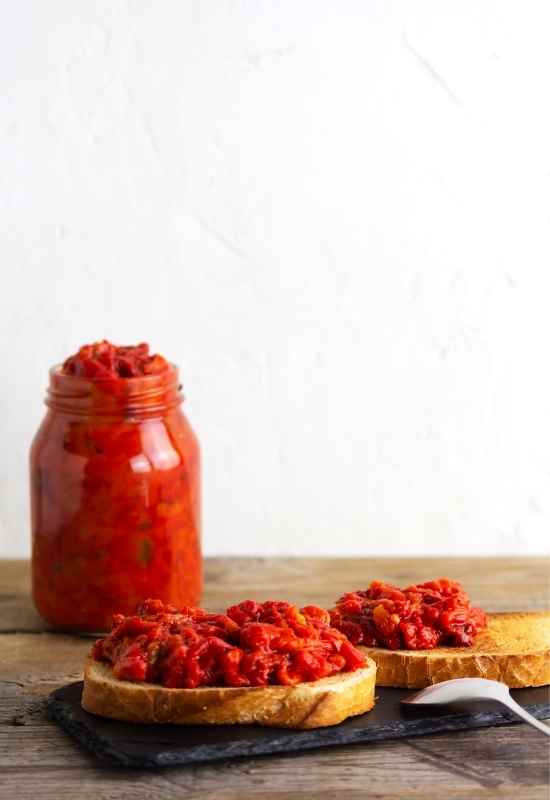
Ajvar is a relish condiment made chiefly from roasted red bell peppers. It is commonly eaten on top of cevapi sausages but can also be eaten with platters of each or with bread.
People usually made ajvar in mid-autumn as the fresh bell peppers are easily available and can be preserved for later use. Different varieties of ajvar can be used such as sweet, hot or piquant, while piquant being the most common.
Urnebes
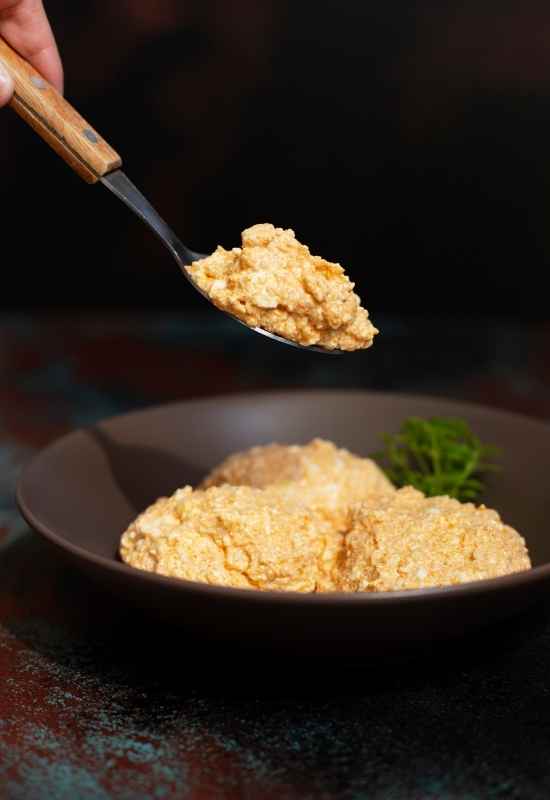
Urnebes is a type of salad made from a mixture of cheese, paprika, chilli peppers, mushed-up sour cream, salt, garlic, and any other spices of choice. Mostly enjoyed in Southern Serbia, Urnebes can vary in spiciness and is typically eaten as a side dish at barbecues.
Gibanica
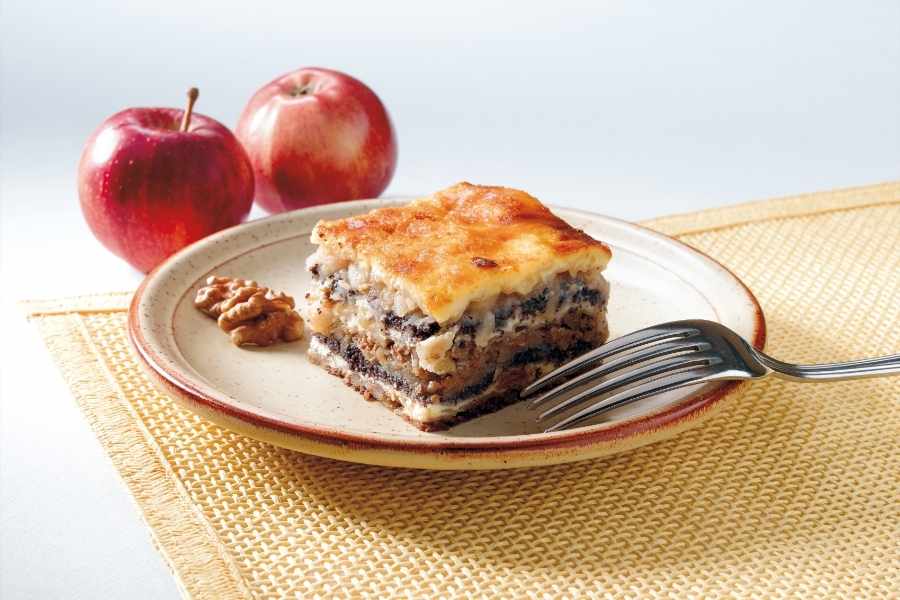
Gibanica is a kind of Serbian cheese pie prepared using phyllo dough (sometimes substituted with yeast dough), white cheese and eggs. Gibanica is a very famous dish in the Balkans and is also considered to be one of the national dishes of Serbia.
It can be eaten as a snack, for dinner, or occasionally for breakfast too. There are many variations and the most popular is known as gužvara, which means crumpled.
In order to prepare this variation of gužvara gibanica, the sheets of phyllo dough are first immersed in a creamy blend of fresh cow’s cheese and eggs. They are then layered and baked in the oven in the form of a casserole.
Pljeskavica
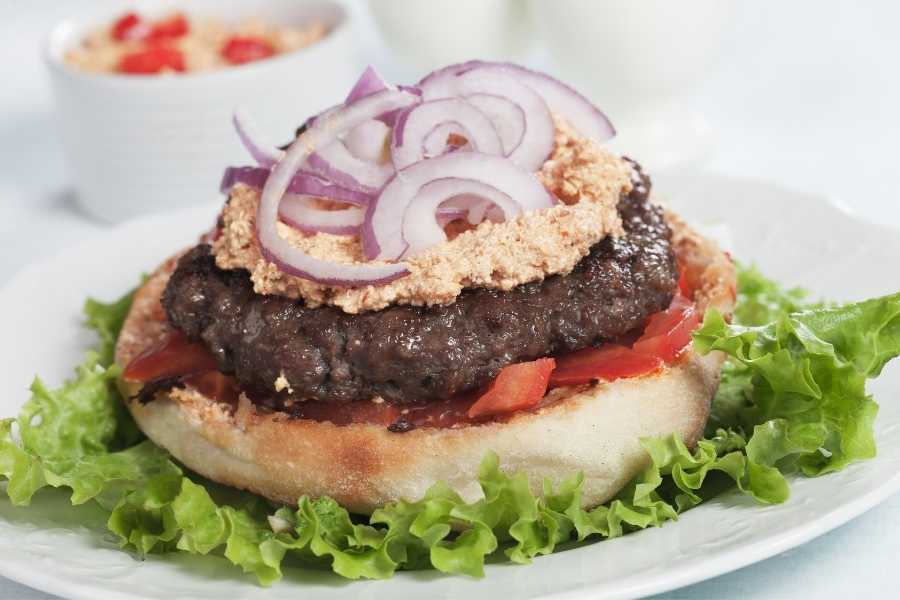
Pljeskavica, also known as the Serbian hamburger, is a flat, rounded patty prepared using minced beef, pork, veal, or a mixture of all three. Certain selected seasonings are also added, such as paprika, salt, pepper, and, at times, finely minced onions and garlic.
Pljeskavica is served by placing it on lepinja flatbread or on a plate with several side dishes such asajvar, kajmak and chopped onions.
Considered to be another of Serbia’s national dishes, the name pljeskavica originates from the word pljeskati, which means to clap. The patty is traditionally prepared using this motion, hence the name. It is then grilled on both sides until it turns a smoky brown color, with distinctive grill marks on both sides.
Prebranac
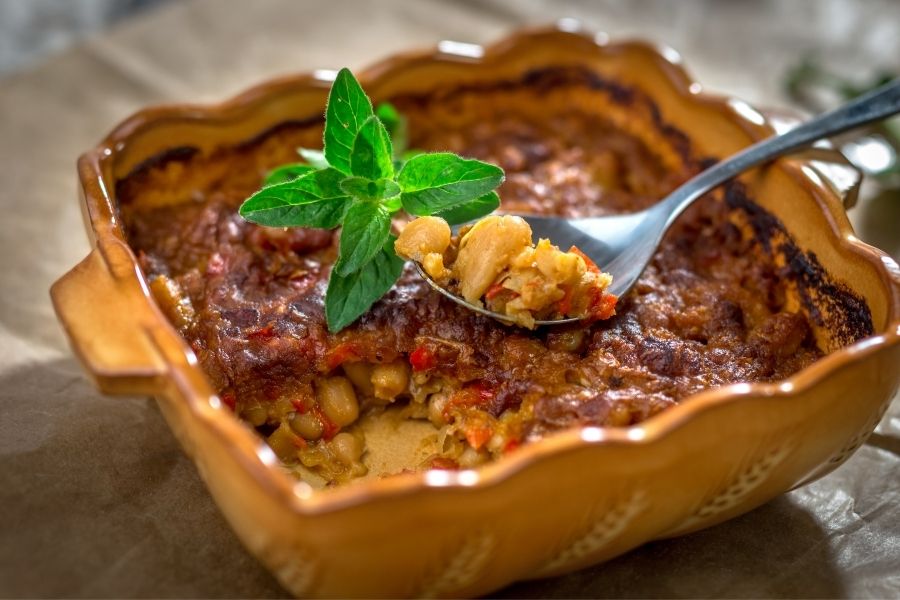
Prebranac is a dish consisting of beans baked with onions, garlic, bay leaves and Hungarian powdered paprika, accompanied by oil and water.
It is generally eaten as an appetizer or main dish with a side of warm crusty bread.
Tulumba/Pomba/Bamiyeh/Balaḥ ash-Shām
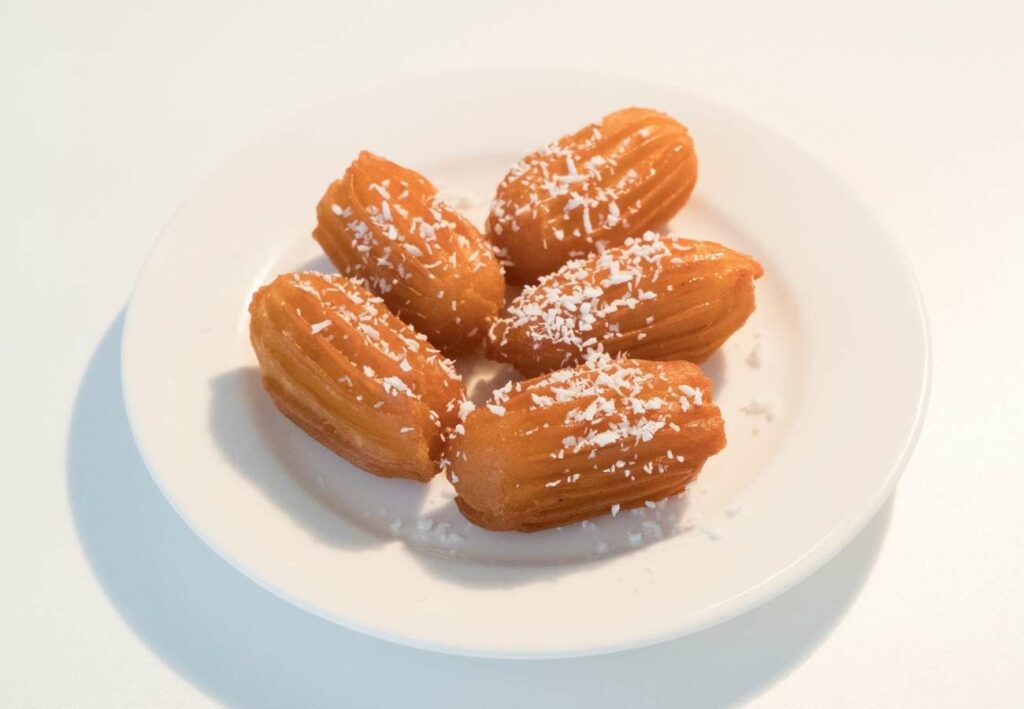
Tulumba, also known as Pomba, Bamiyeh or Balaḥ ash-Shām, is a deep-fried dessert.
It prepared using an unleavened dough lump, which is shaped as a small ovoid and includes ridges lengthways. It is shaped with the help of a pastry bag or cookie press, which has a fitting end part.
Tulumba is initially deep-fried to give this dessert a golden colour, and then sugar-sweet syrup is added on top while it’s still hot.
Krofne
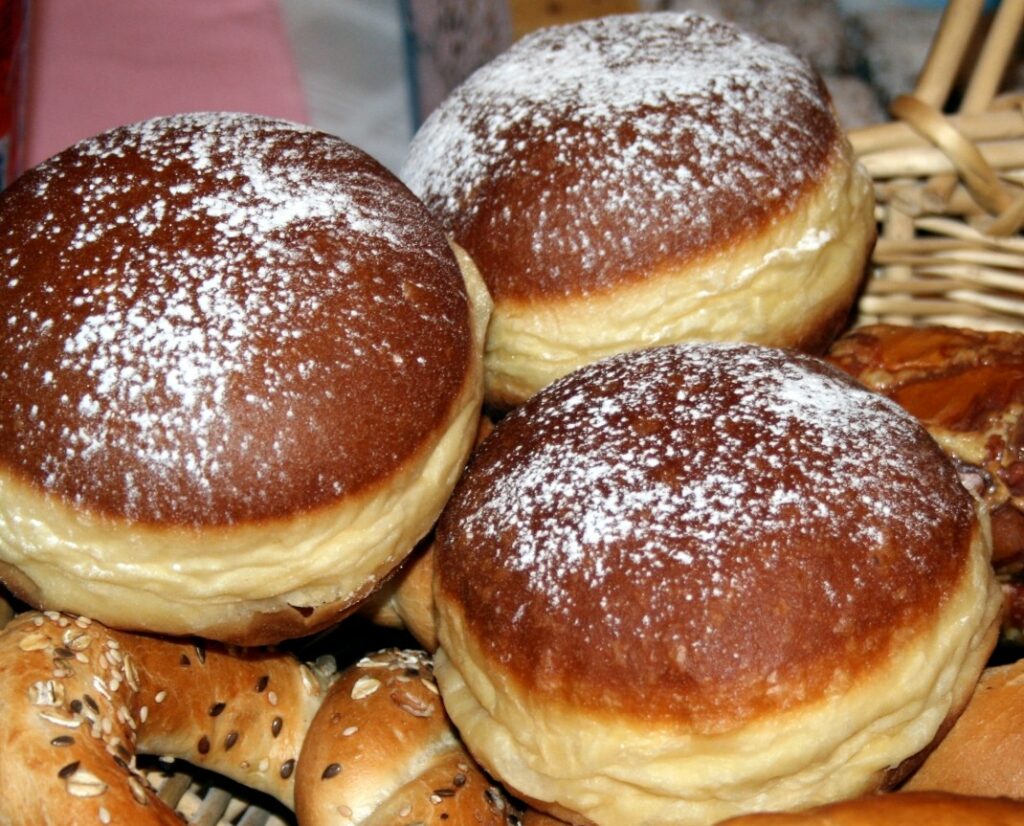
Krofne are a type of deep-fried donut which are popular in both Serbia and Croatia. They don’t have a round hole in the center like donuts usually found in the US do.
Krofne can be filled with marmalade, chocolate or vanilla custard, and can also be topped with icing sugar, chocolate icing or sprinkles.
Börek
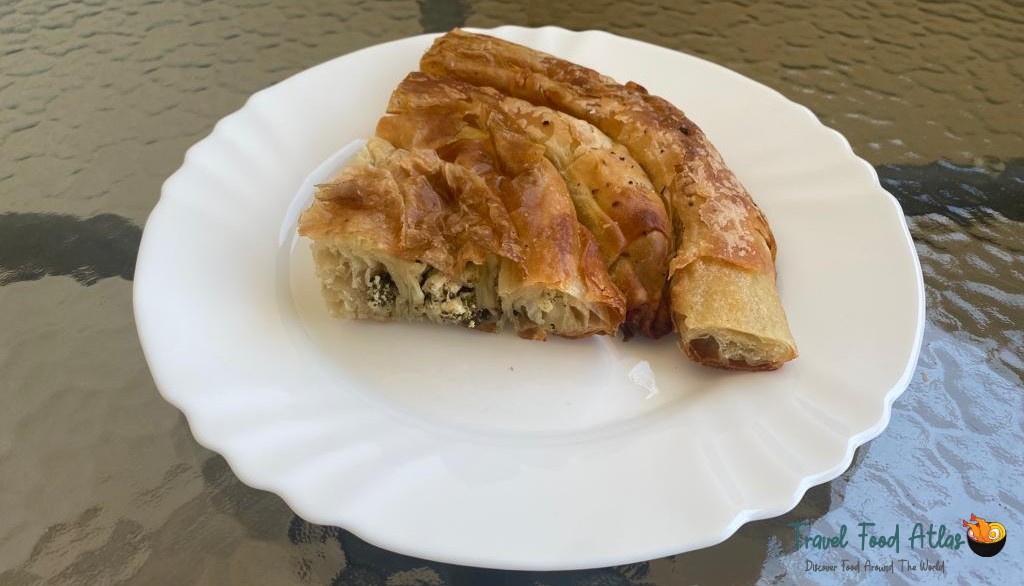
Börek (also known as Burek, Byrek or Boureki) covers a range of pastry dishes made by layering thin phyllo dough, with fillings such as cheese, minced meat, spinach and seasonings, along with a creamy egg yogurt mixture which is baked into a crispy and flaky pie-like dish.
Lepinja
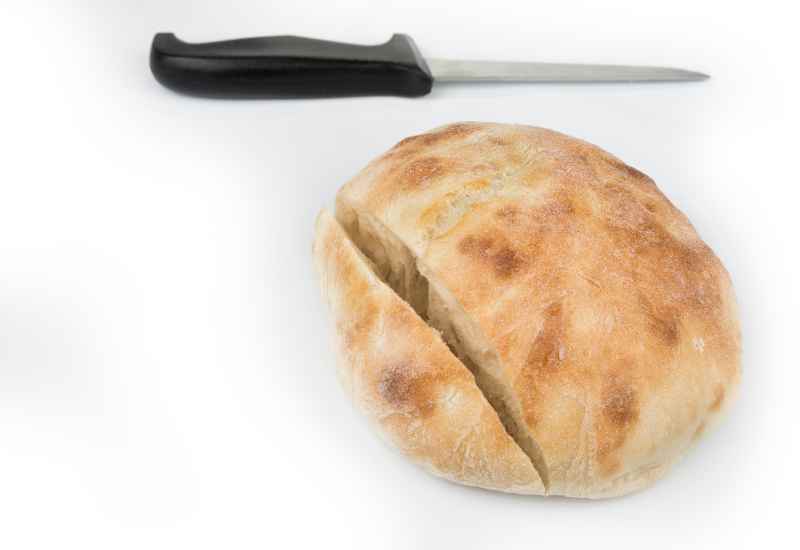
Lepinja is a type of Balkan flatbread prepared using three ingredients: salt, flour, and water. Generally accompanied by minced meat (cevapi), it is widely consumed in the Balkan countries.
Lepinja is normally baked at a high temperature, which gives the bread its golden-brown crust. It is usually served at almost all picnics or barbecue meetings and can be served with vegetarian or meat garnishes.
Kozunak/Cozonac (Easter Bread)
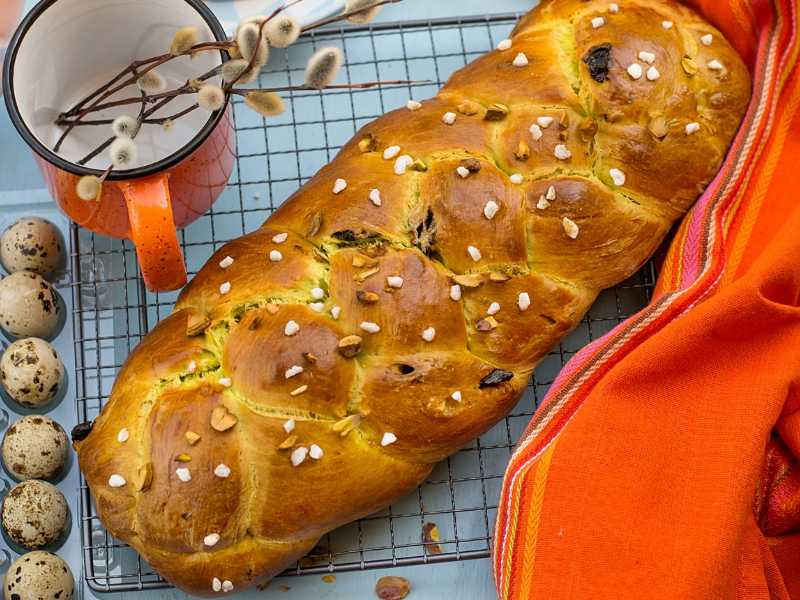
Kozunak, also known as Cozonac or Easter Bread, is a traditional sweet bread popular in Bulgaria, Romania, Serbia, Albania and Moldova. Traditionally it was baked once a year for Easter which marks the end of lent when abstinence from eating meat is practiced for 40 days.
The dough is left to rise several times and kneaded in between rises. While the dough is being prepared, the raisins are soaked in the rum. The raisins are later spread over the dough which is usually braided before baking.
Čupavci
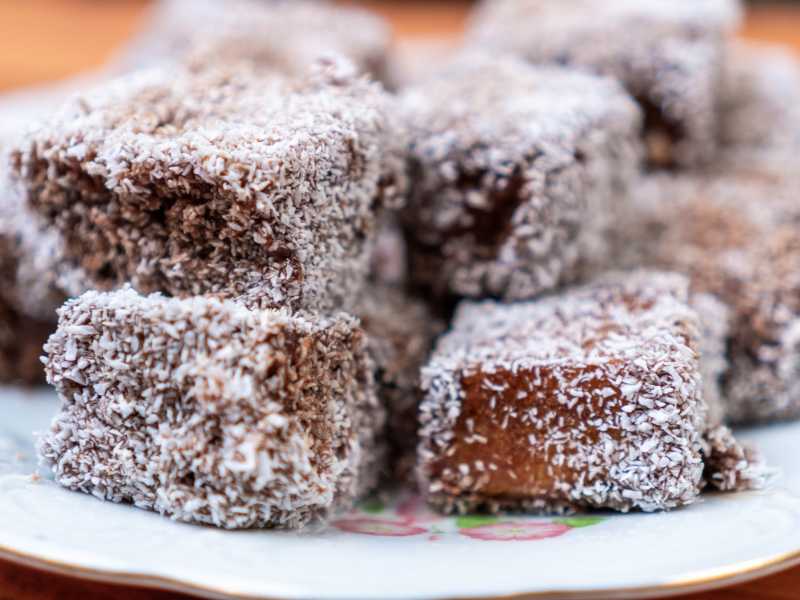
Čupavci is a sweet treat consisting of small cube-shaped cakes made of sponge or sponge cake dipped in chocolate and then sprinkled with desiccated coconut. They are particularly popular throughout the Balkan countries and are often made for special occasions such as Christmas, birthdays, weddings and baptisms.
The name ‘čupavci’ translates in English to hairy ones, referring to the shredded coconut coating that looks like hair or fur.
Kifli (Kilfa)
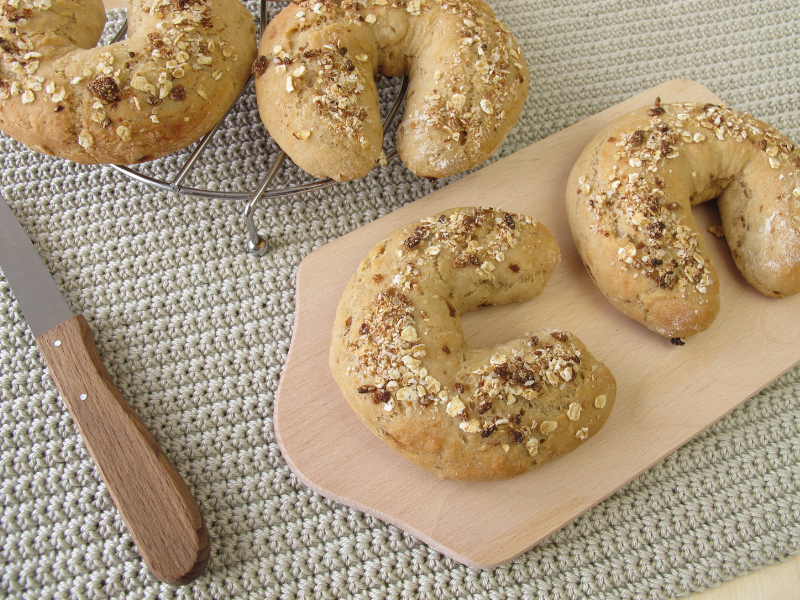
Kifli or Kifla is a sweet pastry snack in the shape of a crescent moon that is popular throughout Eastern Europe. It is similar to a croissant although it is made with a dough more similar to bread than to pastry. It is a staple for families all over Eastern Europe, served for breakfast, as a snack, or to accompany meals.
Kifli can be served plain, with seeds, sweetened, or filled with a variety of fillings.
Gibanica
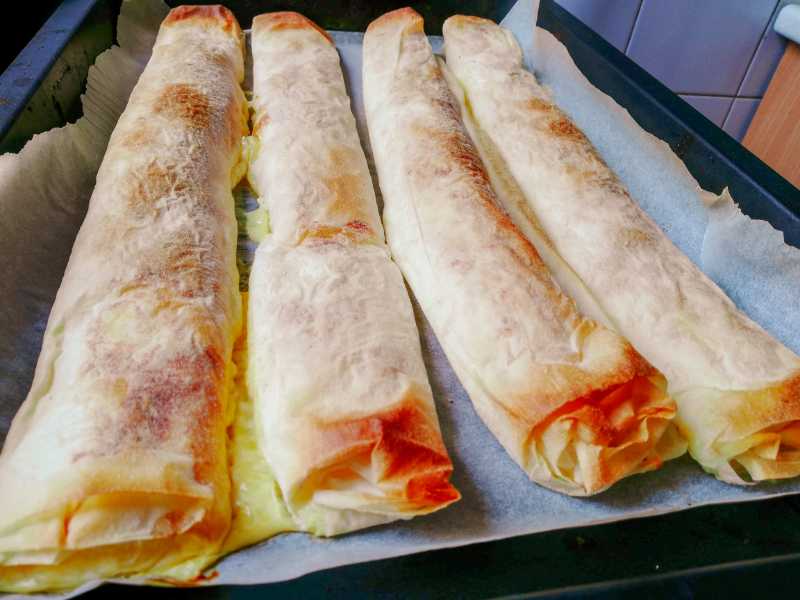
Gibanica is a traditional wheat flour pastry filled with soft cheese. The filling may be a soft spreadable cheese such as cottage cheese or soft crumbly cheese like feta. The easiest preparations use ready-made phyllo dough, but it also made with freshly rolled dough and baked.
Sataraš
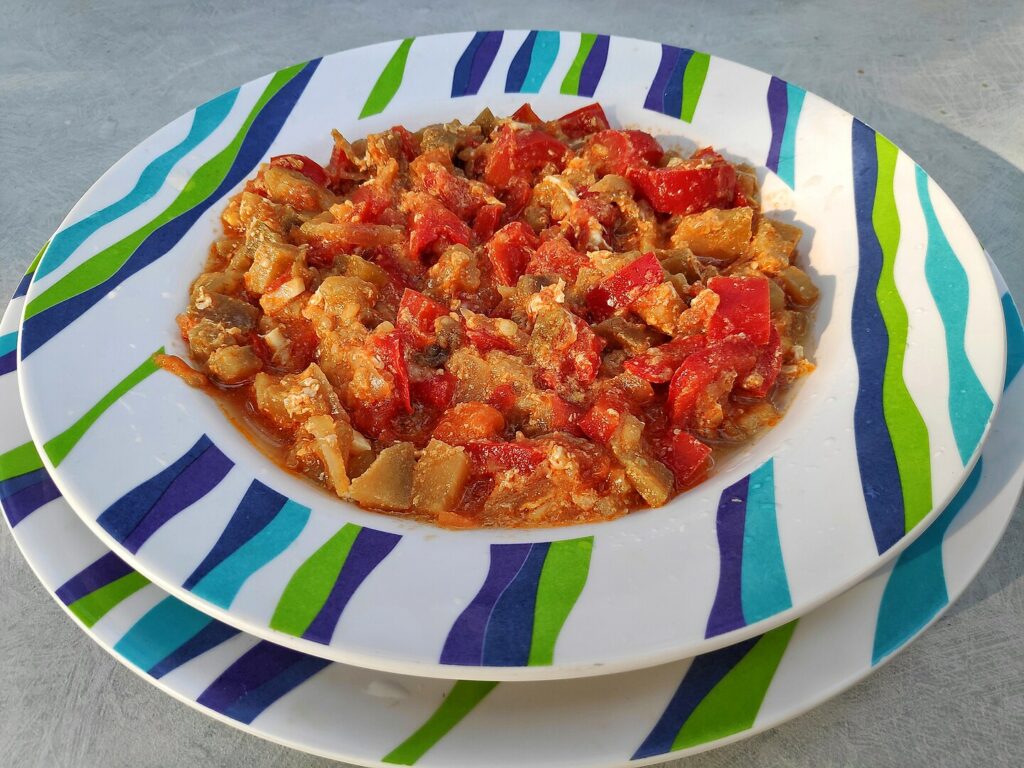
Sataraš is a traditional Balkan stew made with tomatoes, onions and peppers. They are first sautéed in oil, lightly seasoned then gently cooked into a chunky stew. It is served as a side or main dish.
Sataraš can be eaten as an accompaniment for meat or with starches like bread or eaten alone as a stew. When prepared for breakfast, it is topped with eggs.
Bundevara
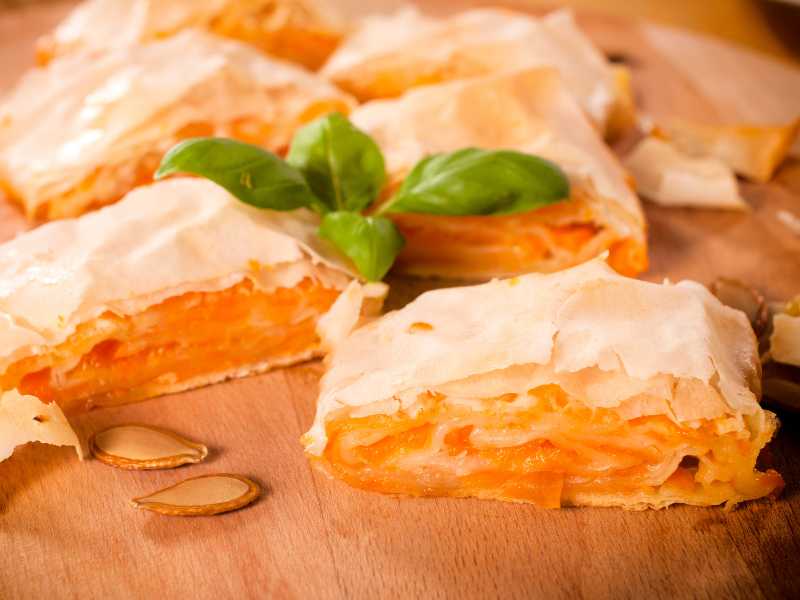
Bundevara is a traditional Serbian pastry consisting of layers of phyllo dough, sweet, spiced pumpkin and cream filling. The cream filling is spread between several sheets of phyllo dough.
The pumpkin filling is placed over the top layer of dough and rolled up. They are baked until the filling cooks and the pastry has a light golden color.
Trahana
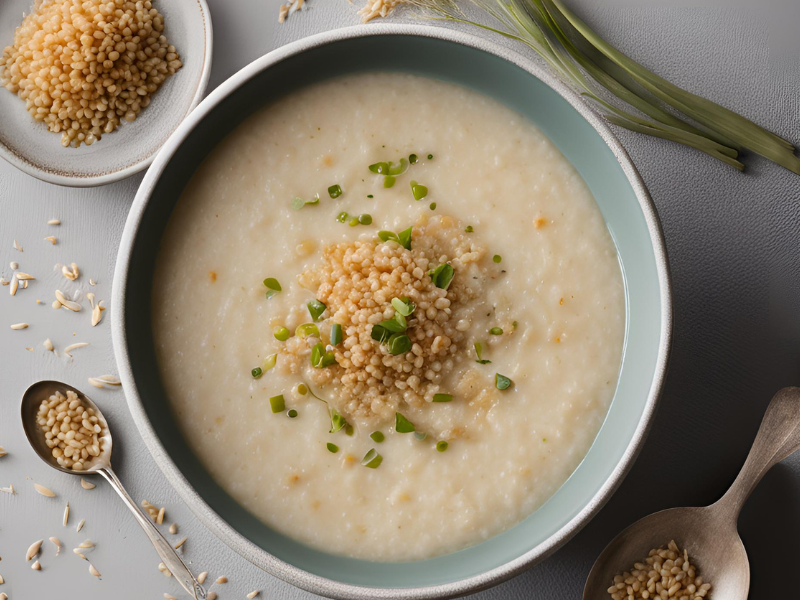
Trahana is a type of fermented grain made from cracked wheat or semolina mixed with yogurt or fermented milk that is used to make a popular soup in Balkan and Mediterranean countries.
Trahana is considered the world’s oldest fast food and is a traditional method of preserving milk and grains.

